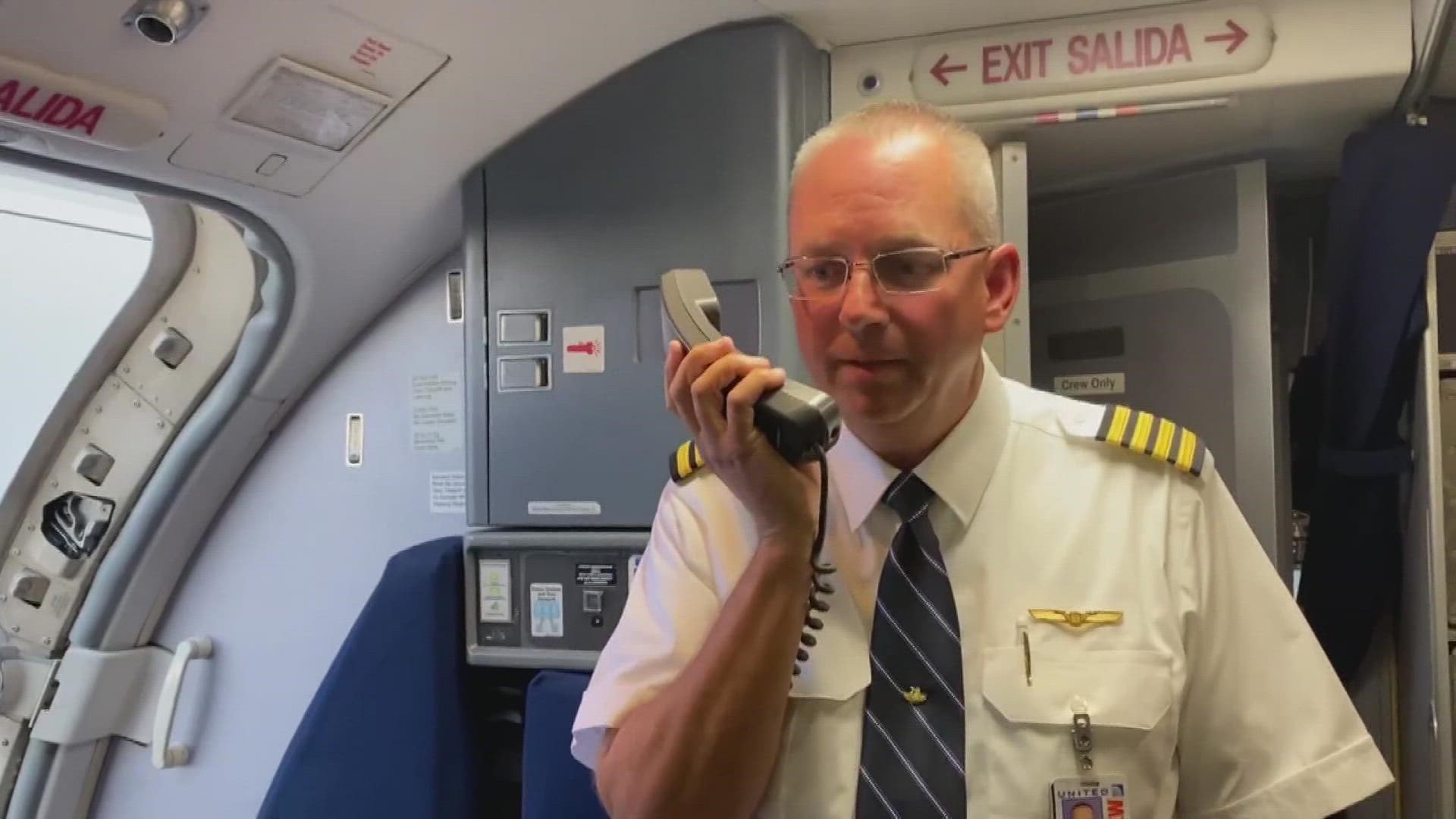DENVER — A few small thunderstorms popped up on Sunday afternoon near Denver International Airport after the second straight day of 100-degree heat.
Even though the storms only produced a dribble of rain with light winds on the ground near the runways, they caused quite a bit of trouble higher up in the atmosphere.
DIA said 51 flights had to be diverted to other airports, many of which ended up in Cheyenne, Wyoming. NBC News reporter Tom Costello happened to be on one of the flights.
“The captain on our United Airlines flight said he had never seen wind shear this bad going into Denver," Costello said. "80 miles per hour. Alarms were going off in the cockpit.”
Wind shear is a sudden change of wind direction or wind speed -- or both -- as a plane moves vertically through a column of air.
"When you encounter severe wind shear, it's like a bucking bronco in some cases," 9NEWS aviation expert Greg Feith said. "The plane will start bouncing up and down, and usually, the pilot will have to make large manual control movements to power through the winds."
Feith said wind shear is one of the most dangerous weather conditions a pilot can face.
He said a pilot landing at DIA with thunderstorms nearby could feel the wind change in three different directions in less than three seconds. Quick and decisive decisions had to be made on Sunday over Denver.
“That’s what pilots get paid to do – make those decisions in the best interest of safety," Feith said. "That’s why they divert. That’s why they go around."
He said after a Delta flight crashed in Dallas in 1985, the industry stepped up the weather technology on commercial aircraft in a big way. Planes are now equipped with sophisticated wind shear detectors.
"And the topic of wind shear is hit hard in flight school. These pilots really know what they are doing," Feith said. "I mean, think about it. We haven't had a weather-related accident in the United States in decades."
Feith said Denver is one of the most common airports in the country to experience severe wind shear. He said you can avoid most of it by booking your summer flights in the morning or late evening, avoiding the prime thunderstorm development hours of 2 to 7 p.m.
SUGGESTED VIDEOS: Colorado Climate

